The Acid Tests were a series of parties held by author Ken Kesey during the mid-1960s centered on the use of & advocacy for the psychedelic drug LSD.
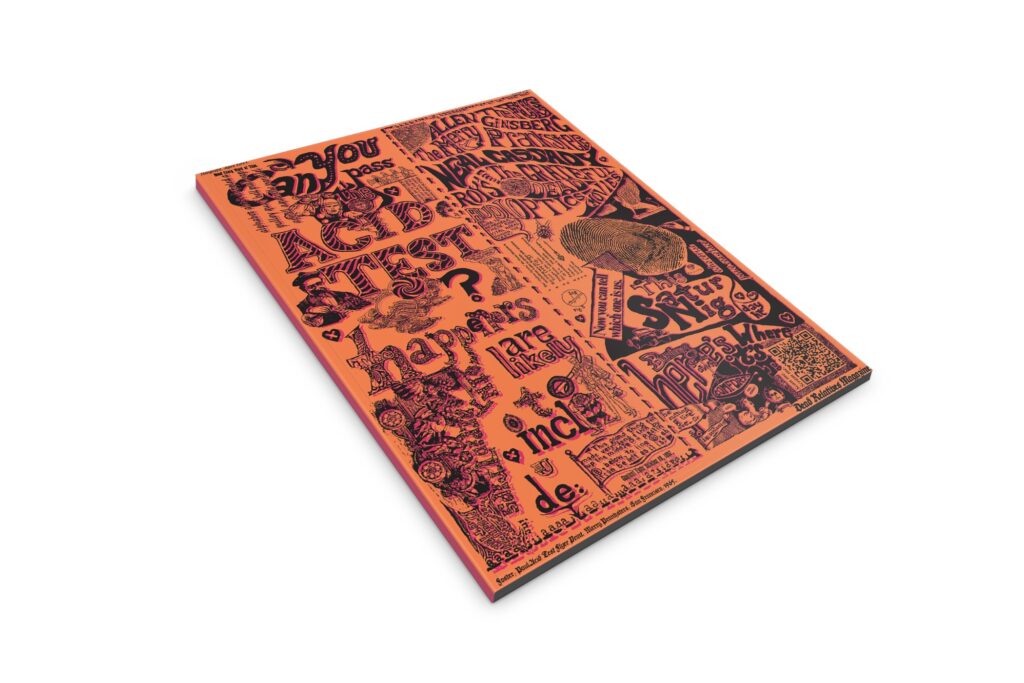
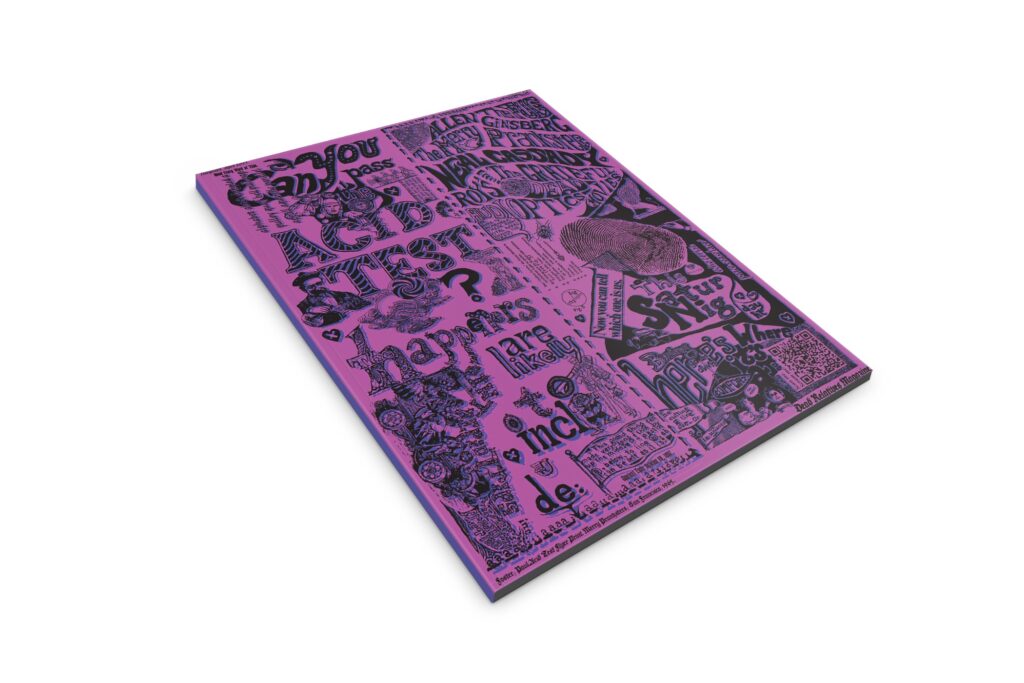
Fundraising flips available now. We hand-trimmed 100 copies.
LSD was not illegal in California until October 6th, 1966, & was not listed as a Schedule 1 controlled substance by the United Nations until February 21st, 1971.
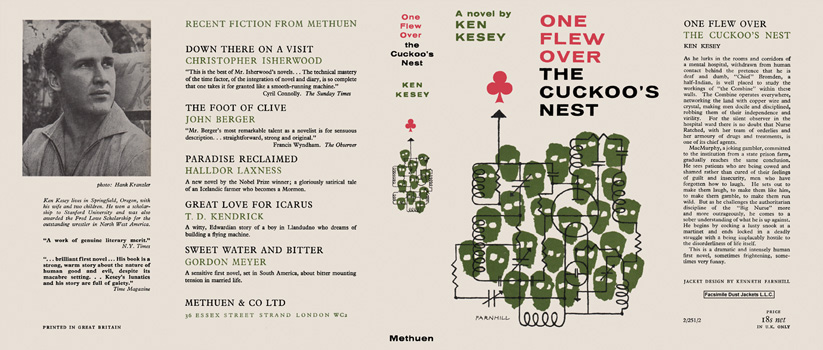
Invited by colleagues during his time as a graduate student at Stanford University,
Ken Kesey volunteered to be a test subject & night guard in hallucinogenic government studies to supplement his income. His time as an MK-ULTRA subject directly inspired his 1962 novel One Flew Over the Cuckoo’s Nest; he often had chances to chat with mental patients, on & off psychedelics. Over time, he didn’t believe them to be insane, but more or less sectioned off from society because they didn’t fit within conventional standards of behavior.
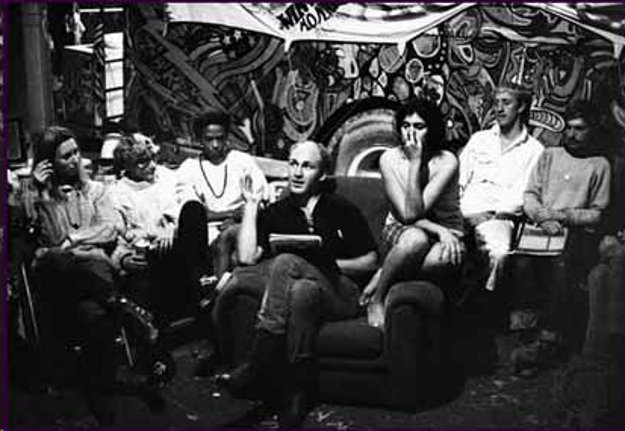
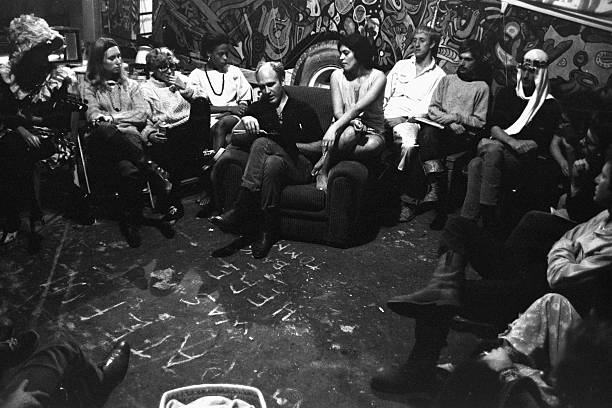
In part due to the film, most interpretations of the novel feature Randall P. McMurphy (Jack Nicholson), a criminal who declared himself insane to serve his term in a mental institution, to be the main protagonist of the novel. His arrival incites the longer-standing patients to rebel against the ward authorities.
However, the novel’s schizophrenic narrator Chief Bromden offers a closer comparison to Kesey’s intended takeaways.
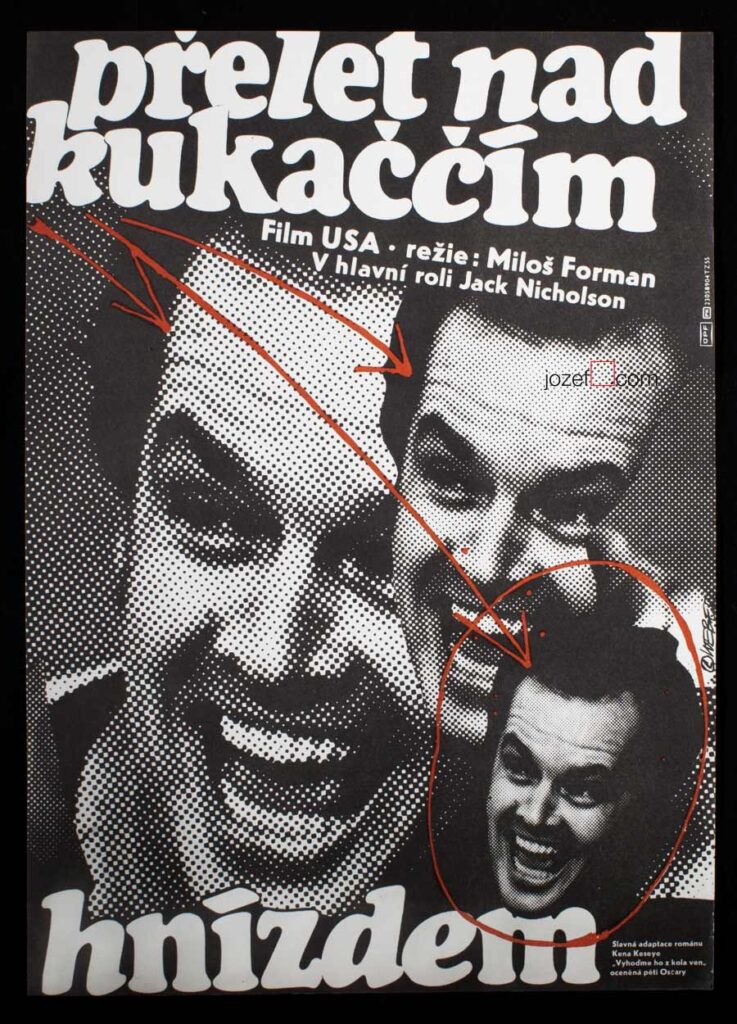
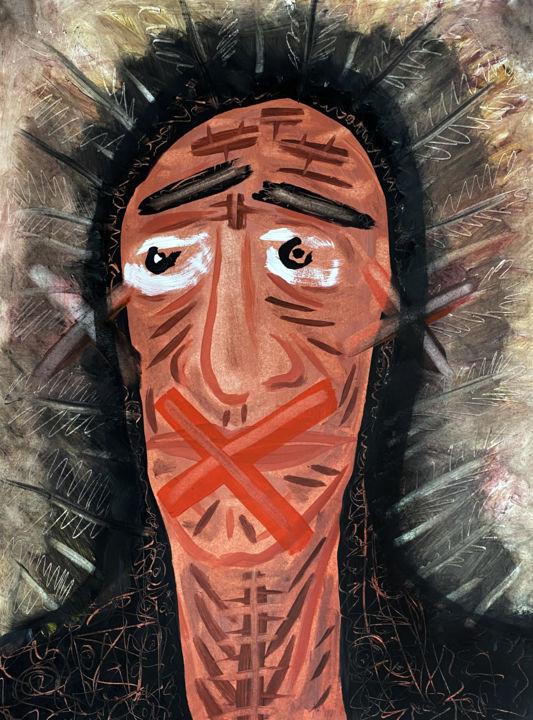
“It wasn’t me that started acting deaf, it was the people that first started acting like I was too dumb to hear or see or say anything at all,” (178).
During one of his first MK-ULTRA peyote trips, Kesey hallucinated a Native American man sweeping the floors of the hallways. He wrote the first 3 pages of the novel during this encounter.
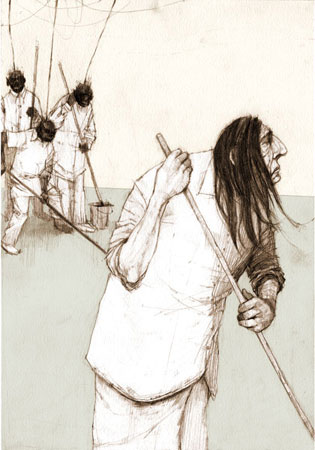
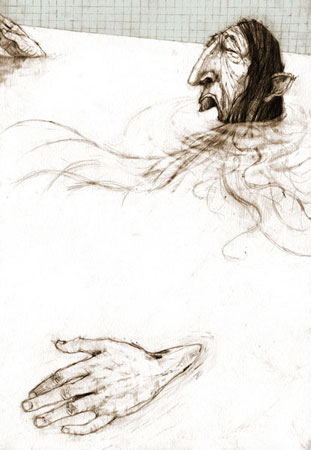
Raised by his tribe & forced to adapt to the dominant culture, Chief Bromden increasingly isolated himself as the society around him further disregarded his Chinook identity. Presenting mute & deaf since fighting in World War 2, he’d been involuntarily held at the ward & fed the concoction of medications Nurse Ratched uses to control & subdue its population. His hallucinations revolve around ‘The Combine’ & occur when explaining the hospital’s control tactics over the patients.
This, combined with Kesey’s takeaways from his time working & volunteering at the mental health facility, infers that Bromden’s schizophrenia was caused by the hospital.
By designing the character as a minority figure, Kesey was able to comment directly on psychiatry, institutionalization, & cultural assimilation at large.
Many high schools in the United States assign the novel as a required rebellious text. Despite featuring a Native American narrator, most curriculums fail to properly dissect the novel from an Indigenous worldview. Coverage of current Chinook issues within & by extension outside Washington/Oregon is scarce. Chief Bromden’s identity is often discarded in academic spaces parallel to how the ward interacts with him in the novel.
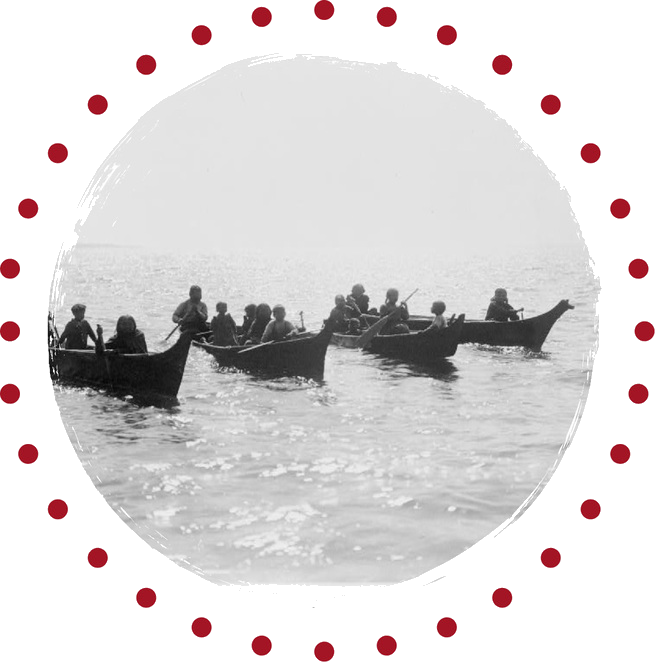
The Chinook Indian Nation was recognized as a federal tribe in 2001, only to be revoked 18 months later under a new administration.
Results of non-recognition include:
-Losing land grants when elders pass, as their descendants are not considered Native by law.
-Ineligibility for tribal scholarships & Indian Child Welfare Act Protection (Native children are overwhelmingly displaced from their families).
-Absence of funding for natural disaster prevention, mental health care, health care, & other basic essentials.
Stand With #ChinookJustice.
Restore Federal Recognition.
Sign directly to the actionnetwork.org campaign by the Chinook Nation below.
You can create change with just a name, email, & zipcode. Learn more by scrolling through the embed & visiting chinookjustice.org.
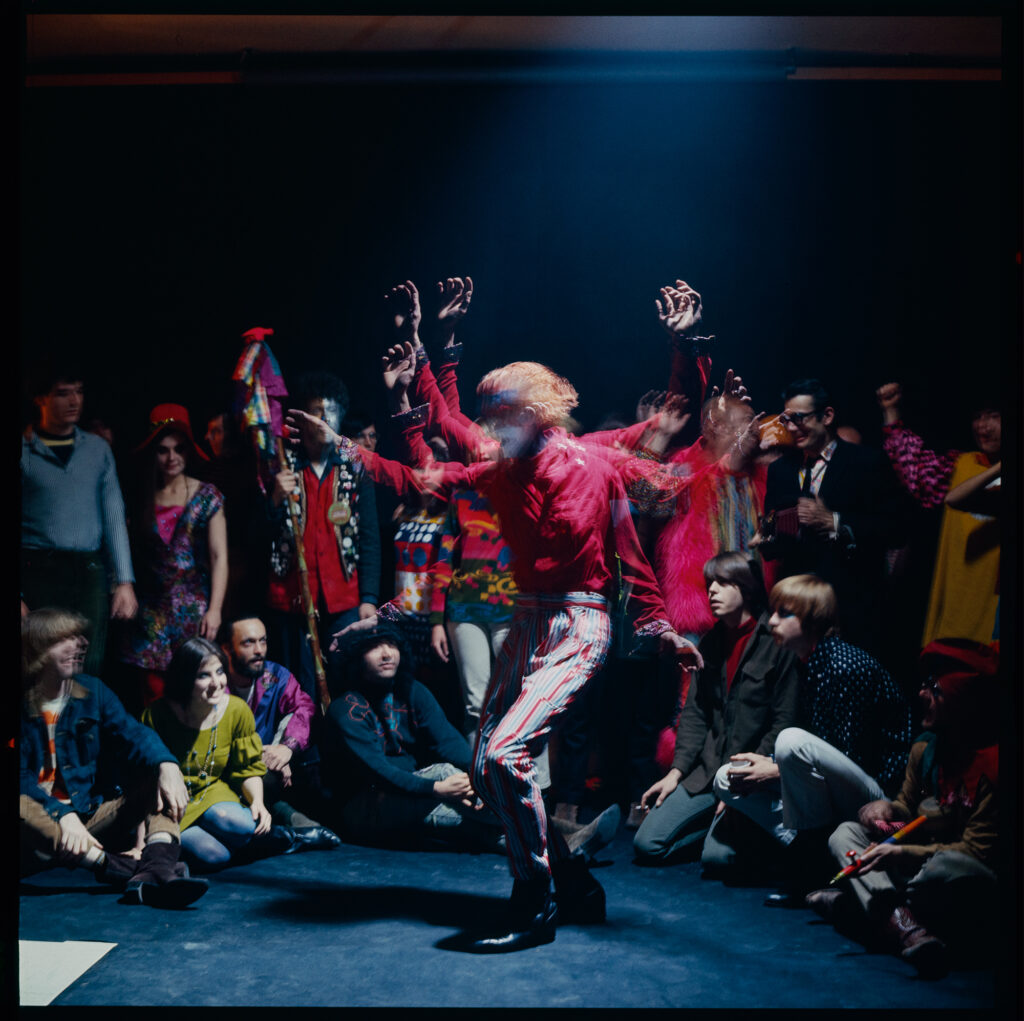
The profits earned from the immediate success of One Flew Over The Cuckoo’s Nest allowed Ken Kesey to purchase properties in California & Oregon. He lived between these locations communally with the Merry Band of Pranksters, a community of friends, family, colleagues, & collaborators. These include but were not limited to:
-Authors
-Actors
-Professors
-Sound Engineers
-Videographers
-Musicians
-Sculptors
-Filmmakers
-Graphic Designers
-Cartoonists
-Newspaper Columnists
-Visual Artists
-Activists
-Programmers
-Gardeners
-Comedians
-Light Operators
-Chemists
Kesey’s second novel, 1964’s Sometimes a Great Notion, required travel to New York City for a string of publication parties. He started planning a road trip from Pranksters cabin/home base in La Honda, California across the country. More of the collective became interested in joining him, so he purchased a 1939 International Harvester school bus previously converted into a mobile camping home by the last owner to take his eleven (11) children on vacation.
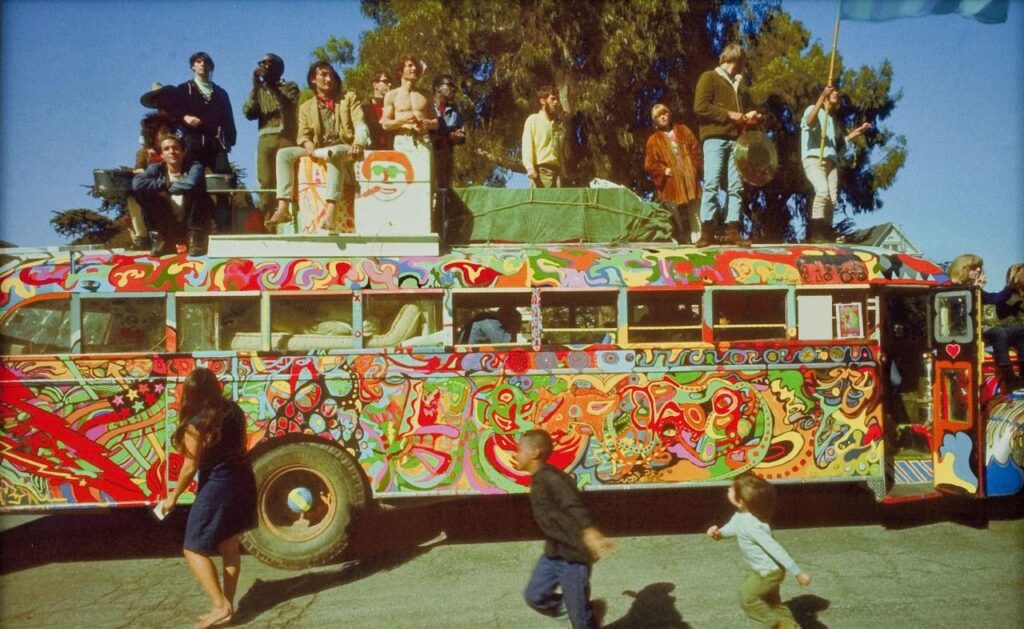
Jack Kerouac’s 1957 novel On The Road served as his main inspiration, going as far as to recruit Neal Cassaday, Kerouac’s inspiration for key character Dean Moriarty, as their bus driver. The Merry Pranksters painted the bus inside & out, built a seating platform above the roof, & carved out a motorcycle carrier, among adding a sound system & intercom. They named their creation ‘Furthur’ (accidental spelling that stuck) & left on June 17th, 1964. Apart from introducing the Hells Angels to LSD & meeting like-minded individuals from the Beatnik generation of writers, they partied, tripped, painted, & networked across the Southern United States & up the East Coast.
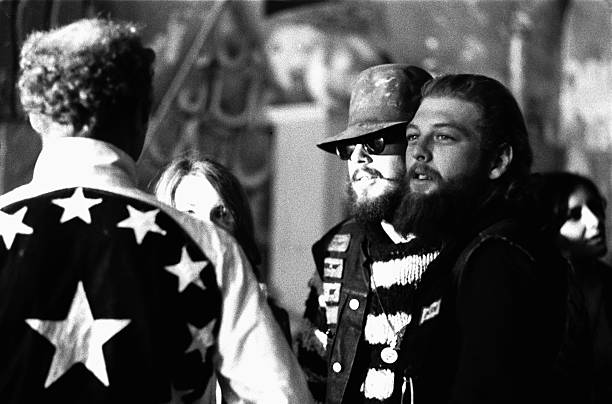
Ted Streshinsky.
Ken Kesey upon arrival in NYC, 1964.
The sense of communication in this country has damn near atrophied. But we found as we went along it got easier to make contact with people. If people could just understand it is possible to be different without being a threat.”
Their new notoriety amongst the growing counterculture led them to start hosting a series of parties titled The Acid Tests, after the California Gold Rush figurative term for a test of character/product.

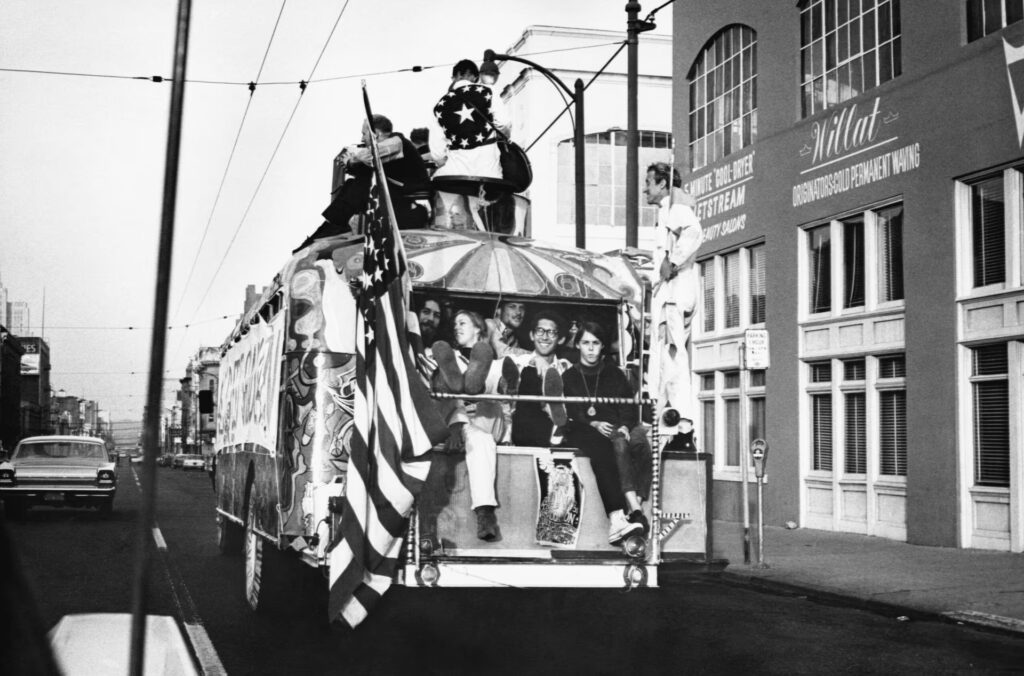

After touring through Canada full circle, Kesey & his collective attempted to edit/synchronize over 100 hours of film footage/audio tapes from the North American adventure. They began to showcase their progress every Saturday night at Kesey’s cabin, gaining enough traction to warrant hand-posted fliers & performances.
John Page Browning, the Prankster’s light show operator, happened to attend a Warlocks bar gig in Palo Alto & invited the band out to the first official Acid Test (November 27th, 1965). Within a week of invitation, they were spontaneously laid off from their residency, jammed with the Pranksters casually at the first Test, & made plans to debut under a new name at the second – The Grateful Dead. At their first show, they ingested hallucinogens, played a 5-minute set, became too high to continue, “devastated everyone,” (Jerry Garcia), & were asked to come back. The Dead shortly became the Test house band, tying the group to its early fan base & reputation.
Thank you for reading. We hope you learned as much as we did writing this.
Please consider donating or sharing this article so we can continue to unearth archives & compile their stories.
Did you know the guy who wrote the 90’s chart-topper “Sex & Candy” sold LSD & hard-boiled eggs for a living? We asked him about it. (Marcy Playground on Deadheads & Modern Influences)
Teenage Dave Grohl crashed at a bar attic in Amsterdam? At the same spot Queens of the Stone Age started? Landon Reed put us on to The Acid Tests in the same conversation… Read the full story here: (German Cops, The Acid Tests, & Chaz Ferrare: The Sleeperz)